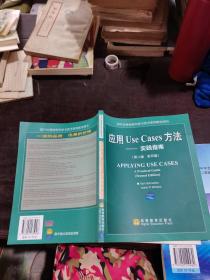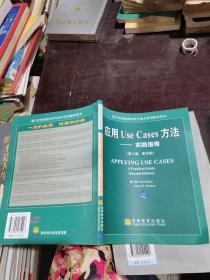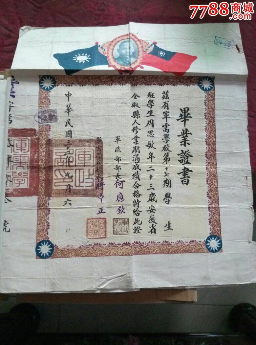
应用Use Cases方法
¥ 5.3 2.6折 ¥ 20.5 八五品
仅1件
作者施奈德
出版社高等教育出版社
出版时间2003-08
版次1
装帧平装
货号J17
上书时间2023-10-10
- 店主推荐
- 最新上架
商品详情
- 品相描述:八五品
图书标准信息
- 作者 施奈德
- 出版社 高等教育出版社
- 出版时间 2003-08
- 版次 1
- ISBN 9787040135008
- 定价 20.50元
- 装帧 平装
- 开本 其他
- 纸张 胶版纸
- 页数 245页
- 字数 320千字
- 【内容简介】
-
实际案例分析是一种从用户角度定义软件系统外在特征的方法。本书对这种前沿的软件开发技术提供了清晰、实用的介绍。通过诸多实例和详尽的案例学习,指导读者在软件系统开发中运用实际案例分析方法。此版包括更多复杂的、精确的实例,对各种实际案例文档制作技巧的前置条件和结论进行描述,并讨论其他建模方法如何同实际案例关联。本书引导读者体会软件开发过程,阐述实际案例如何应用于项目初期、需求与风险分析、系统体系结构、调度规划、回溯与测试、文档制作。主要论题包括:识别实际案例并描述其成分,编制事件流(包括基本路径与替代路径),实际案例的完全性与正确性检查,以活动图和序列图将实际案例图例化,整合用户界面描述与数据描述文档,以实际案例为例测试软件体系结构模式与设计,在项目规划、原型设计与项目评测上应用实际案例,从实际案例中识别并图示分析类型,在用户指南、测试实例与培训材料中应用实际案例。本书用相当篇幅讲解如何识别常见错误并给出相应结论。本书另一特征是给出了易用文档模板集、UML符号简缩指南。本书适用于软件学院应用软件开发、系统工程实际案例分析类课程。
作者简介:
Geri Schneider is a senior consultant and trainer at Andrews Technology,Inc.,in the areas of iterative development,software project mangement,object-oriented analysis and design,softward architecture,design patterns,and use cases.In addition,she teaches in the softward engineering management certificate program for the University of California Santa Cruz Extension.She previously worked for Rational Software Corporation mentoring customer in the areas of iterative development.object technologies,and use case analysis.
Jason P.Winters is a staff design engineer for Cadence Design Systems,Inc.He was previously with Lucent Technologies as a staff engineer.At Lucent,he designed adn built specialized tools,promoted the use of modern software development practices and tools throuthout the company,and mentored projects on object-oriented analysis and edsign,UML,adn use cases. - 【目录】
-
Foreword
Preface to Second Edition
Preface
Chapter 1 Getting Started
An Iterative Software Process
An Example Project
The Project Description
Starting Risk Analysis
Chapter Review
Chapter 2 Identifying System Boundaries
Identifying Actors
Identifying Use Cases
Describing Actors and Use Cases
Handling Time
Potential Boundary Problems
Scoping the Project
Chapter Review
Chapter 3 Documenting Use Cases
The Basic Use Case
Pre- and Postconditions
Flow of Events
Guidelines for Correctness and Completeness
Presentation Styles
Other Requirements
Handling Complex Use Cases
The Basic Path
Alternative Paths
Detailing Significant Behavior
Documenting Alternatives
Scenarios
Adding Direction to the Communicates Association
Chapter Review
Chapter 4 Advanced Use Case Documentation Techniques
Include
Extend
Inheritance
Interfaces
Chapter Review
Chapter 5 Diagramming Use Cases
Activity Diagrams
Simple Sequence Diagrams
Diagramming the User Interface
Chapter Review
Chapter 6 Level of Detail
Determining the Level of Detail
Traceability between Use Cases
Use Cases for Business Processes
Chapter Review
Chapter 7 Documenting Use Cases
Chapter 8 Reviews
Chapter 9 Dividing Large Systems
Chapter 10 Use Cases and the Protect Plan
Chapter 11 Constructing and Delivering a System
Appendix A Resources
Appendix B Documentation Templates
Appendix C UML Notation
Appendix D Sending Results of the Use Case Estimator
Appendix E Order-Processing System
Order-Processing System
Risk Factors
System-Level Use Cases
Architecture
Index
相关推荐
-

应用Use Cases方法
八五品枣庄
¥ 8.20
-

应用Use Cases方法
九品北京
¥ 8.19
-

应用Use Cases方法
八五品枣庄
¥ 8.20
-

应用Use Cases方法
八五品济南
¥ 8.20
-

应用Use Cases方法
八五品重庆
¥ 5.21
-

9787040135008应用Use Cases方法
七五品赣州
¥ 2.01
-

应用Use Cases方法 正版内页干净
九品北京
¥ 6.00
-

应用 Use Cases 方法:实践指南(影印版)
九五品廊坊
¥ 22.00
-

应用 Use Cases方法:实践指南(第二版影印版)9787040135008
九品北京
¥ 6.00
-

Use Cases Requirements in Context
八五品北京
¥ 69.00
— 没有更多了 —























以下为对购买帮助不大的评价